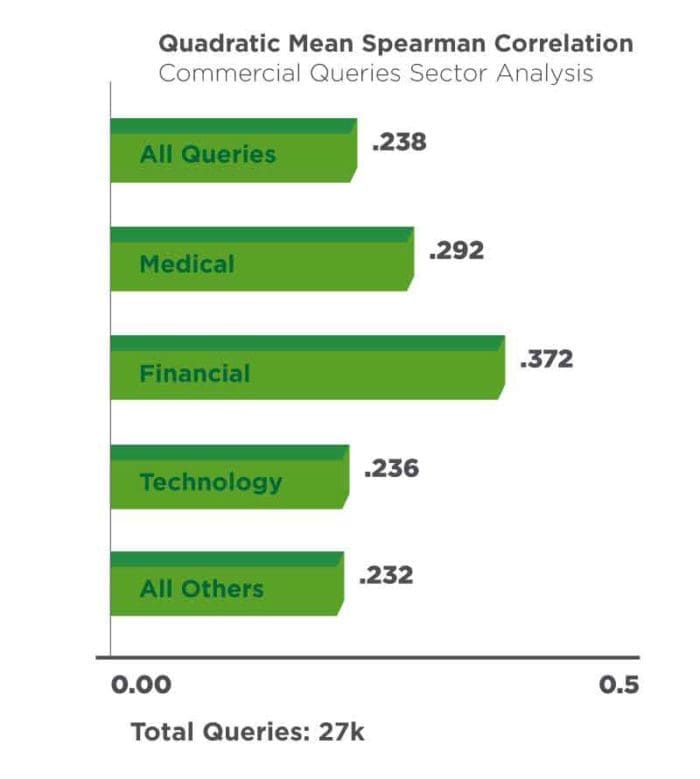I’m ending Bloom’s SEO month by explaining the importance of media in SEO. This week we are addressing a topic that is often underestimated in SEO, media. They are often used to increased brand awareness, but companies often forget the value of having a link of this importance pointing to their site. Read on to discover the important role backlinks can play for your company and see two typical cases where backlinks are essentials.
Backlinks play an essential role in optimizing a website’s SEO.
SEO can be summarized into three pillars; technical implementations, quality content and link building. The latter is not about to disappear in 2019. Of course, the number of backlinks a site acquires is important, however, it is the quality of these that is crucial. In fact, bad backlinks can stain your reputation, so it’s important to look for partners with great authority on the web. Ultimately, a backlink pointing to your site is a vote of confidence in your favor and the more that site recognized on the web, the more likely it will positively impact your organic traffic!
Some tools such as Ahrefs and SEMRush allow brands to know where their backlinks come from. In the image depicted below, it’s easy to tell that the domain recettes.qc.ca has a lot of backlinks and a good authority on the web.
As we will see later, backlinks are all the more important for certain types of industries such as medical and financial. That’s where online media comes in to play; they have 80+ authority rating and can provide quality backlinks in large quantities and target the URLs of your site as needed. Search engines want to promote quality content and backlinks are the best way to trust the site.

Eric Genge’s study on the importance of 2019 backlinks and the correlation with the ranking
How to leverage the use of content marketing to increase brand awareness and ranking on search engines.
As for digital media, Bloom collaborates with Québecor, a well-known company in Quebec, that owns a multitude of digital media such as Journal de Montréal, Recette du Québec, Casa, Clin d’œil, etc. Content marketing is important for brand awareness, but companies often forget the impact they have on a site’s SEO. Content marketing can take many forms, here are some of them (in order of their level of involvement):
Sponsored Content
This strategy is the simplest and requires the least amount of effort on your part. The advertiser (your brand) positions itself on content developed and planned by the media’s editorial team. You provide the main topics and the media presents your brand on the article’s page with a clickable link. The article will not talk about your brand; you are simply sponsoring the article. This way, you acquire a credible link pointing to your website and the article is shared on social media.
Example: An article about extreme sports sponsored by RedBull.
Native Content
The big difference between sponsored content and native content is written with your brand in mind. The editor receives your brief and creates an article including your keywords. This informative article will be related to your industry, but will not directly mention your brand. However, several times on the page, there will be CTAs linking to your products or services. In addition, your brand logo and a link to your website will be present in several places on the page. So, not only do you promote your brand with personalized content, but you also acquire several backlinks!
Example: An article that gives health advice could be native content for a pharmacy or a private clinic.
Co-Branded content
Co-branded content is very similar to native content. The big difference here is that the article mentions your brand and it is endorsed by you and the advertiser. So, you have a lot more control over the content. Although the text may talk about your brand or products, it is always the journalist who’s in charge of writing the content. Co-branded content is the closest option to a partnership between advertiser and publisher and offers a very wide reach.
Example: An article that highlights the launch of your new clothing line, combined with a social media and video campaign.
Infomercials
If you want to have complete control over the content, then infomercials are the best choice! You write the text that will appear in the Journal de Montréal, for example. Although this publication will not appear on the digital media’s social networks, you will still earn an important link to your site. In addition, you can strategically place hyperlinks that redirect to specific pages on your website. From an SEO point of view, this option is very interesting considering several URLs will be able to benefit from a high authority backlink. This option is perfect for advertisers with a commercial offer to communicate.
Example: An outdoor furniture company publishing an infomercial in a magazine with a specific targeting such as CASA.
All of the above options have the same objective: improve your website’s SEO. Keep in mind that media has an even greater impact on social media. This is another strategy to consider in your media plan since it is easily measurable and increases a company’s visibility. For the best results, it is best to vary the media chosen. A single infomercial in a magazine will have little impact, but a series of articles written for different media will likely make a difference.
Two typical linkbuilding case studies
Google’s algorithm undergoes more than 500 changes per year. This obviously takes into account backlinks, keywords, and several other factors to position your website properly on search engines. But it is difficult to fool Google: it recognizes dubious practices such as keyword stuffing or backlinks acquired through a paid transaction.
YMYL et le E-A-T
One of the most recent updates to Google’s algorithm occurred in the summer of 2018, named the “medic update”. This update mainly affected YMYL (Your Money Your Life) sites. Google’s algorithm can detect if a query is related to YMYL, look at the associated content and then adjust the weight of the ranking algorithm for these specific queries. Given the sensitive nature of the industry, Google wants to ensure that the content it offers on the first page is truthful and relevant to search engine users. This is why the financial and health sectors must respect the EAT methodology (Expertise, Authority and Trustworthiness). This is where the use of online media comes in; the authority it can give you. It is possible that a person may be an expert, but not viewed as authoritative on the web. With a link pointing to your website from the Journal de Montréal, your authority on the web will increase drastically. These domains have a Domain rating with a lot of weight. If you are creating medical/financial articles, a backlink of a well-known media source of this importance is crucial.
Product or campaign launch
If you create a new URL for a new product category or event, digital media and their strong authority will also benefit you. When you create a new page, it has no weight on search engines, so it may take a long time for it to appear on the first page of search results. It is essential to add it to your sitemap and make sure that the content is optimized for search engines. However, the easiest way to position this page on search engines is to acquire backlinks with great authority. This link redirects traffic to the web page and demonstrates to search engines that the site is relevant.
Tips and tricks on linkbuilding
1. Check your Domain Authority (DA) to know the authority of your web site.
I strongly recommend looking at, not only, your domain authority, but also your competitors. This way, you know where you position yourself against the competition. A website with a high domain authority is more likely to rank higher on search engines. If your DA is lower than your main competition, adding a digital media backlink could help solve that problem. Tools such as Moz, SEMrush, and Ahrefs, to name a few, give you an indication of your authority on the web.
Please note that the DA varies from one tool to another, it is a metric that should be taken lightly. Each of the tools has its own algorithm to determine a site’s domain authority.
2. Backlink Gap analysis to learn about your backlink environment and opportunities.
After determining the authority of your site, you can consult all of the backlinks that refer to your competing sites. By using 3-4 direct competitors you can easily identify backlink placement opportunities, but also know if they use other media sources to promote their site.
3. Brand monitoring: Know what’s being said about your brand online
Our last advice is to do brand monitoring. With tools such as SEMrush or Buzzsumo, you can create alerts when certain keywords are researched on the web. We recommend entering your brand name in the tool to see any mentions of your brand. Then, you can request a link to your website in these articles, if it hasn’t been done.
Another best practice is to monitor mentions of your competitors on search engines to identify who’s talking about them. Hopefully, these online media could do the same for you! Brand monitoring also makes it easier to measure brand awareness after the launch of a content marketing campaign.
If you need help with content marketing or link building, contact us here.
Subscribe to The Shift Factor
Our newsletter keeps you in the know on marketing’s biggest shifts and real examples of brands adapting.




Share this: